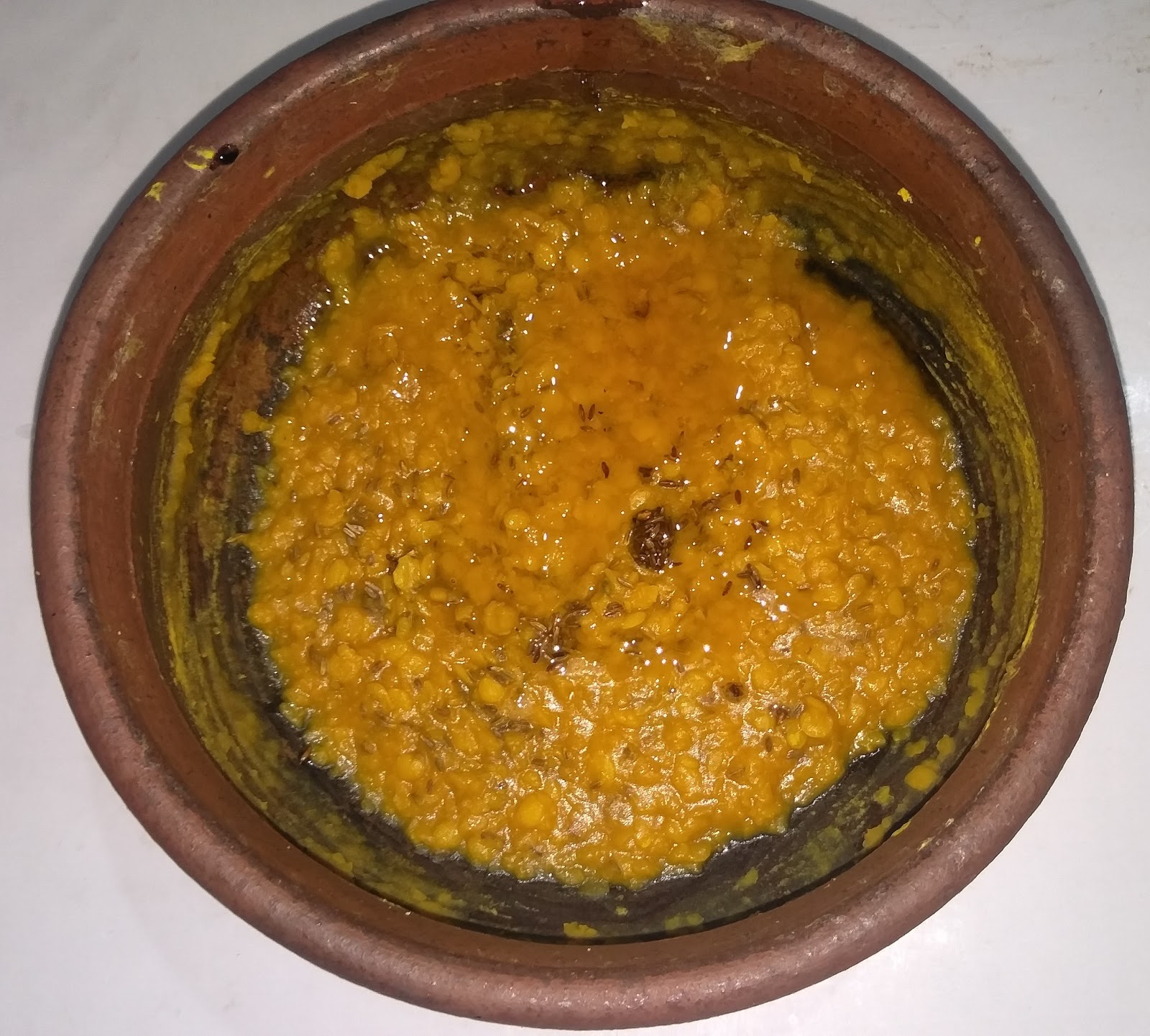Jagannath Puri Mahaprasad | Meetha Dal
Offering to the Divine
Of all naivedyams offered at different temples across India, the greatest spread of naivedyam or bhog to the divine is that of Bhagavan Krishna i.e Jagannath, of 56 (chappan) items of food. This is offered daily and is called mahabhog and when distributed to devotees becomes mahaprasad. Meetha dal is one of the 56 items and forms part of the mahaprasad.
Introduction
About this Recipe
Meetha dal or Mitha Dali, meaning sweet spicy lentil dish, is one of the 56 food items (chappan bhog), given as part of the mahaprasad to Lord Jagannath at the Shree Jagannath temple in Puri, located in the state of Odisha in India. The temple at Puri is the only one in India where Lord Krishna along with brother Balarama and sister Subhadra reside as Jagannath, Balabhadra and Subhadra, respectively. Lord Krishna is the 8th avatar of Lord Vishnu and the temple at Puri is one of the char dham (four abodes) of Hinduism. Hindus go on a pilgrimage to these four abodes to get moksha or liberation from the cycle of life and death. The four sites in the Indian subcontinent being Badrinath, Dwaraka, Rameshwaram and Puri. It is said that Maha Vishnu takes bath in Rameshwaram, meditates in Badrinath, dines at Puri and retires in Dwaraka. Hence the temple food or mahaprasad at Puri is held to be of supreme importance.
56 Food Items – Story of Chappan Bhog to Lord Jagannath
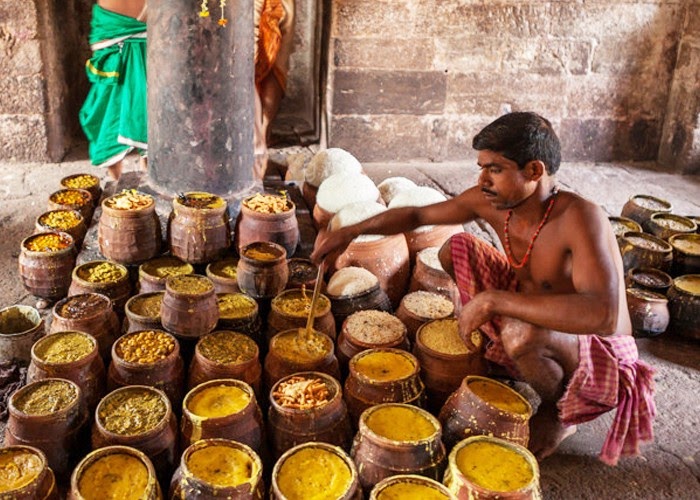
Of all naivedyam offered at different temples across India, the greatest spread of naivedyam or bhog to God is that of Lord Krishna i.e Lord Jagannath, of 56 (chappan) items of food. This is offered daily and is called mahabhog and when distributed to devotees becomes mahaprasad.
The story behind chappan bhog goes somewhat like this:
In order to protect his village from the wrath of the Rain God Indra, the boy Krishna lifted Govardhan parvat and placed it on the tip of his little finger. He sheltered everyone from his village under the parvat. He stood holding the mountain for 7 days until Lord Indra realized his mistake and stopped the rains and floods.
Krishna used to eat 8 food items daily. But during these 7 days, he didn’t consume anything. At the end of the seventh day, people made 56 (8*7) dishes for Lord Krishna.
Even today, every single day, 56 items are prepared in the kitchen of Jagannath Temple, Puri. There are six sets of offerings made throughout different meal hours.
A Different Rice Everyday of the Year for Lord Jagannatha
It is said that the rice variety used to prepare the Mahaprasad to Lord Jagannatha differs everyday. In other words 365 different varieties of rice are grown specifically for Lord Jagannatha, and no variety of rice is repeated in preparing the Mahaprasada for Him! Such total devotion and dedication to the Lord can only exist only in Hinduism!
Constituents of the Mahaprasad
The mahaprasad is of two types – the sankudi mahaprasad and the Sukhila mahaprasad. The sakundi mahaprasad consists of items like rice, ghee rice, mixed rice, mixed curries of different kinds etc. The sukhila mahaprasad consists of dry sweetmeats. There is also a dry mahaprasad which is known as Nirmalaya which includes components and divine accompaniments taken out of the lord like flowers, sandal paste, garlands, etc.
A key aspect of the mahaprasad is that they are prepared only in earthen pots and cooked using the traditional vedic method of firewood cooking.
Meetha dal is one of the 56 items and forms part of the sakundi mahaprasad.
-
Preparation time: 5 mins
-
Cooking time: 35 mins
-
Total time: 40 mins
-
Serving : 5 persons
-
Course: Side dish, accompaniment to cooked rice
-
Cuisine: Odisha – part of mahaprasad to Lord Jagannath
Ingredients
- Toor dal – 150 gms
- Powdered Salt – 2 gms
- Turmeric powder – 2gms
- Jaggery – 50 gms
- Crushed ginger-5 gms
- Hing/Asafoetida – 2 gm
- Cumin seeds – 3 gms
- Ghee -20 ml
- Holy Basil/Tulsi – few leaves
Bhaga Shastra gives ingredient measurements in measurement systems used in the olden days. Hence please use the conversion guidelines below to convert it into modern measurement systems. When giving this recipe, we are not rounding any measurements in the modern units, so as to avoid any deviations from the Bhaga shastra.
Bhaga Shastra Units Conversion
1 Padi – 1500 gms or 1.5 kgs approx.
1 Palam – 35 gms approx.
1 R.e (Rupee Equivalent) – 4.8 gms approx.
Cooking Method
- Wash the toor dal
- Place a pot and add the washed toor dal.
- Next add water, close the lid and allow the dal to boil.
- Once the dal starts boiling, open the lid, stir the dal and partially close the lid.
- Once the dal is half cooked, add powdered salt and mix well.
- After a few minutes add turmeric powder and stir.
- When the dal is almost fully cooked, add jaggery and stir well.
- Then add the crushed ginger.
- Mix hing in water and add it into the dal.
- Allow the dal to cook completely.
- Then remove from the stove/heat.
- Add cumin seeds and mix well.
- Heat the ghee in a pan and add it to the dal.
- Finally drop the Holy basil/Tulsi leaves and serve it.
- Naivedyam is now ready!
Step by step instructions
1
Wash the toor dal. Place a pot on the stove and add the washed toor dal.

2
Next add water, close the lid and allow the dal to boil.

3
Once the dal starts boiling, open the lid, stir the dal and partially close the lid.
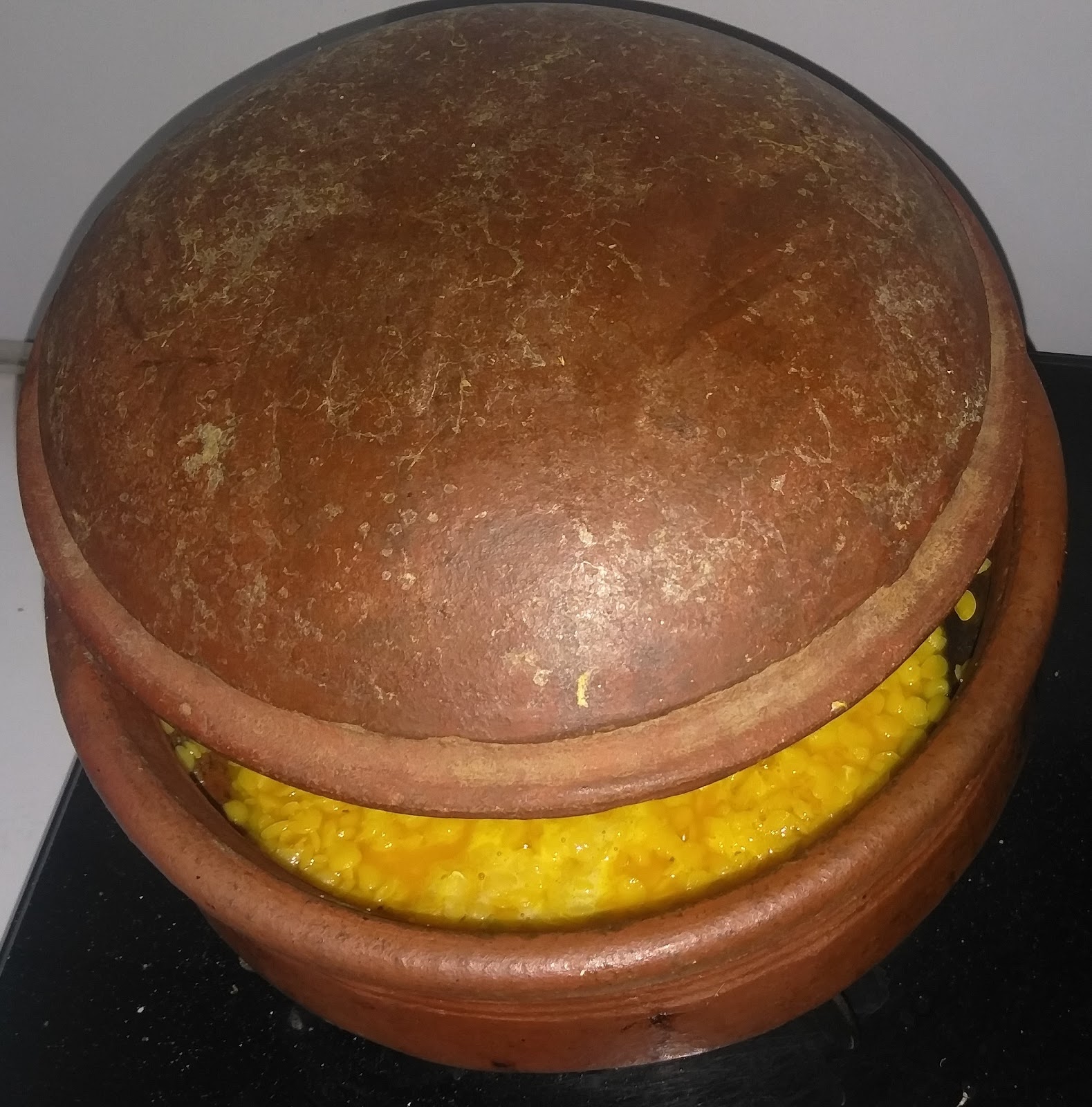
5
Once the dal is half cooked, add powdered salt and mix well.
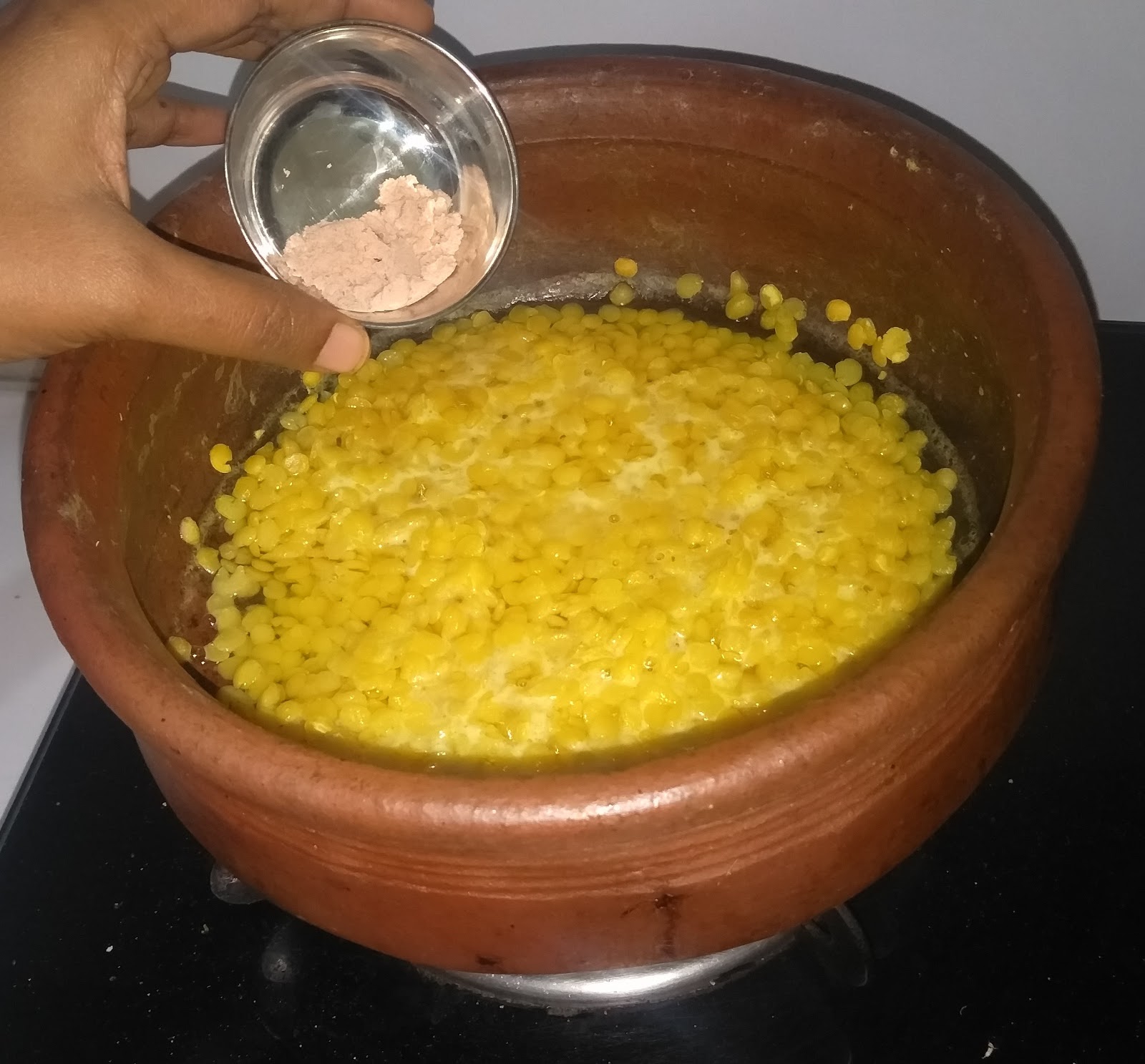
6
After a few minutes add turmeric powder and stir.
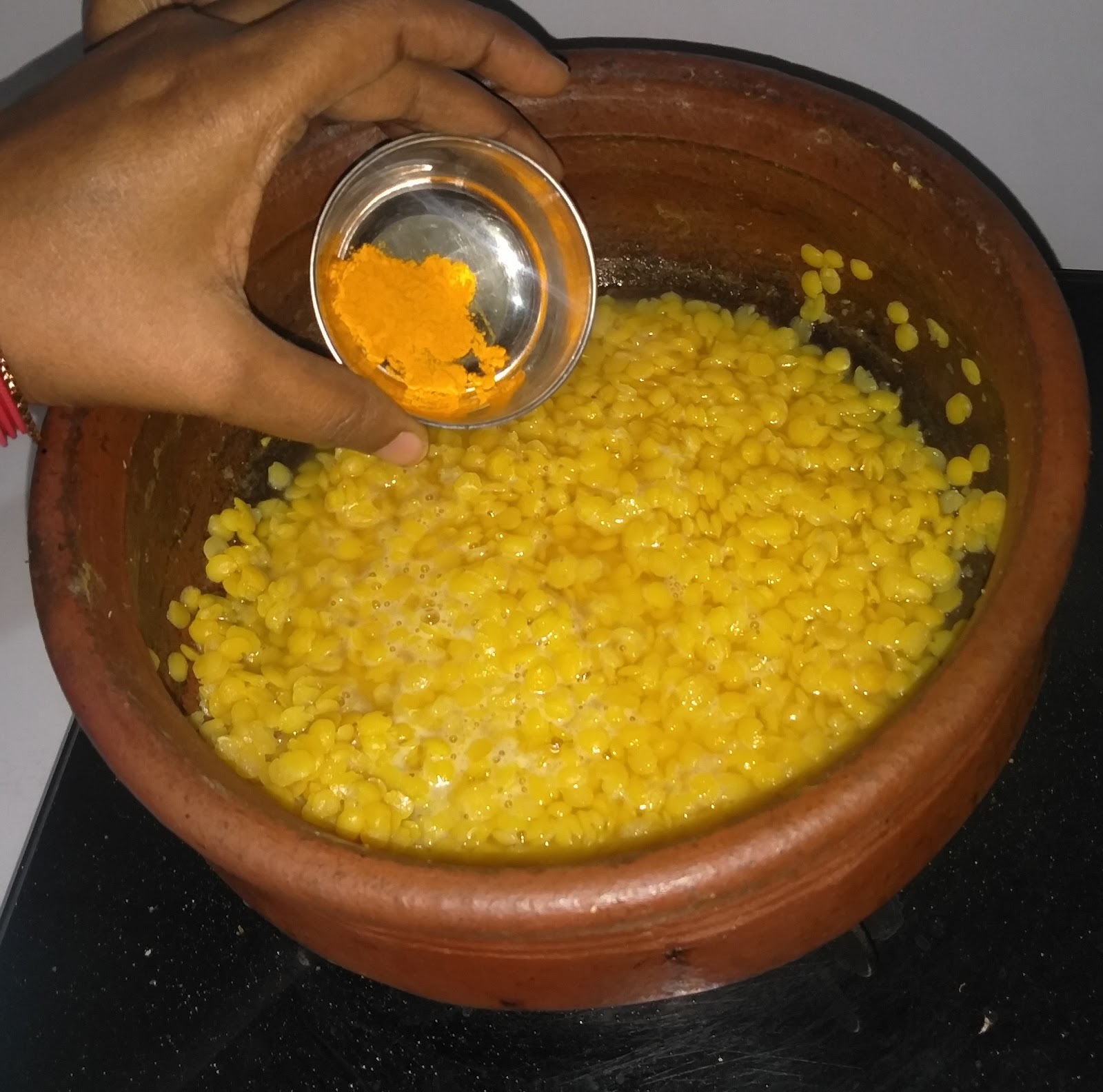
7
When the dal is almost fully cooked, add jaggery and stir well.
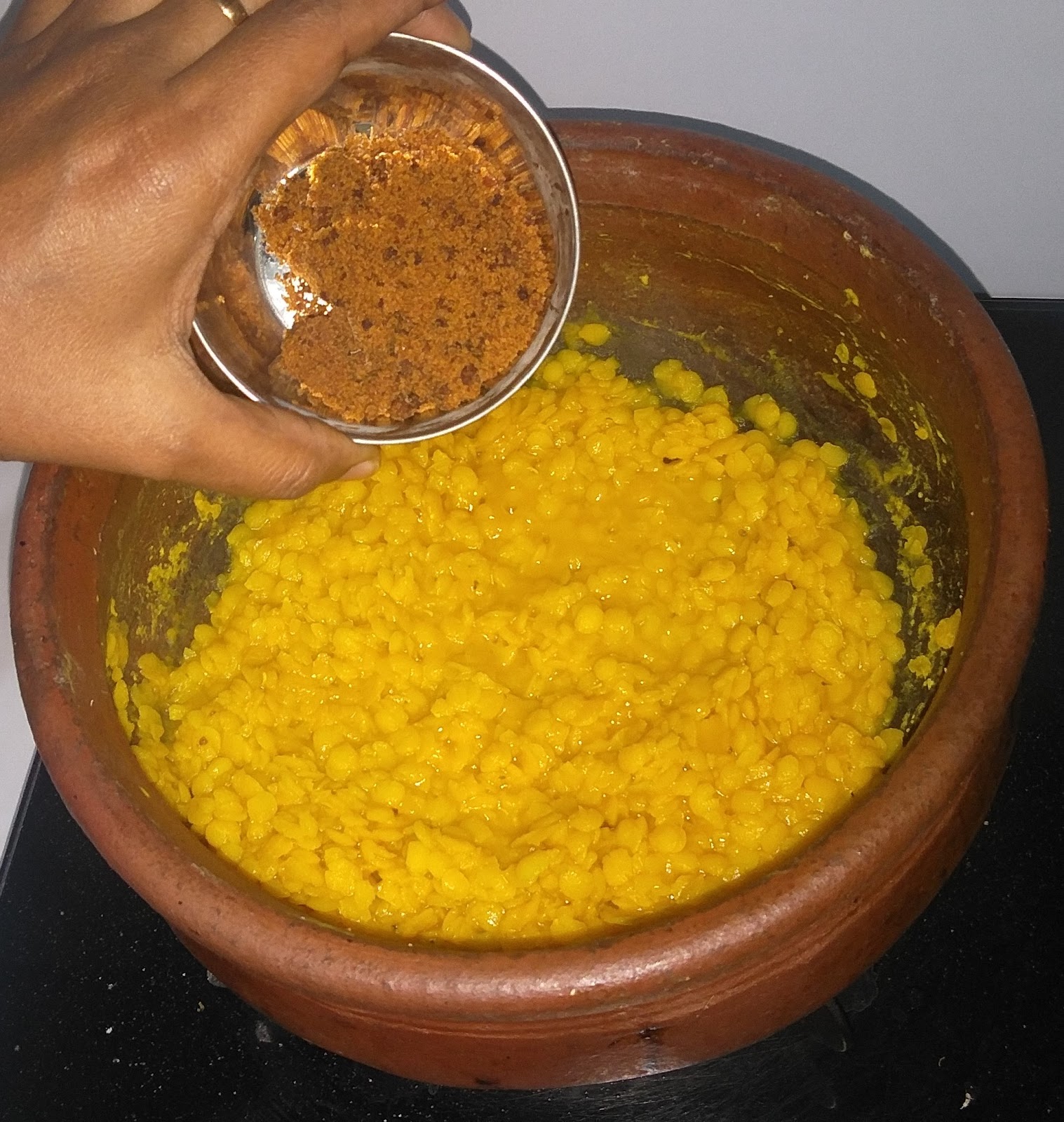
8
Then add the crushed ginger.
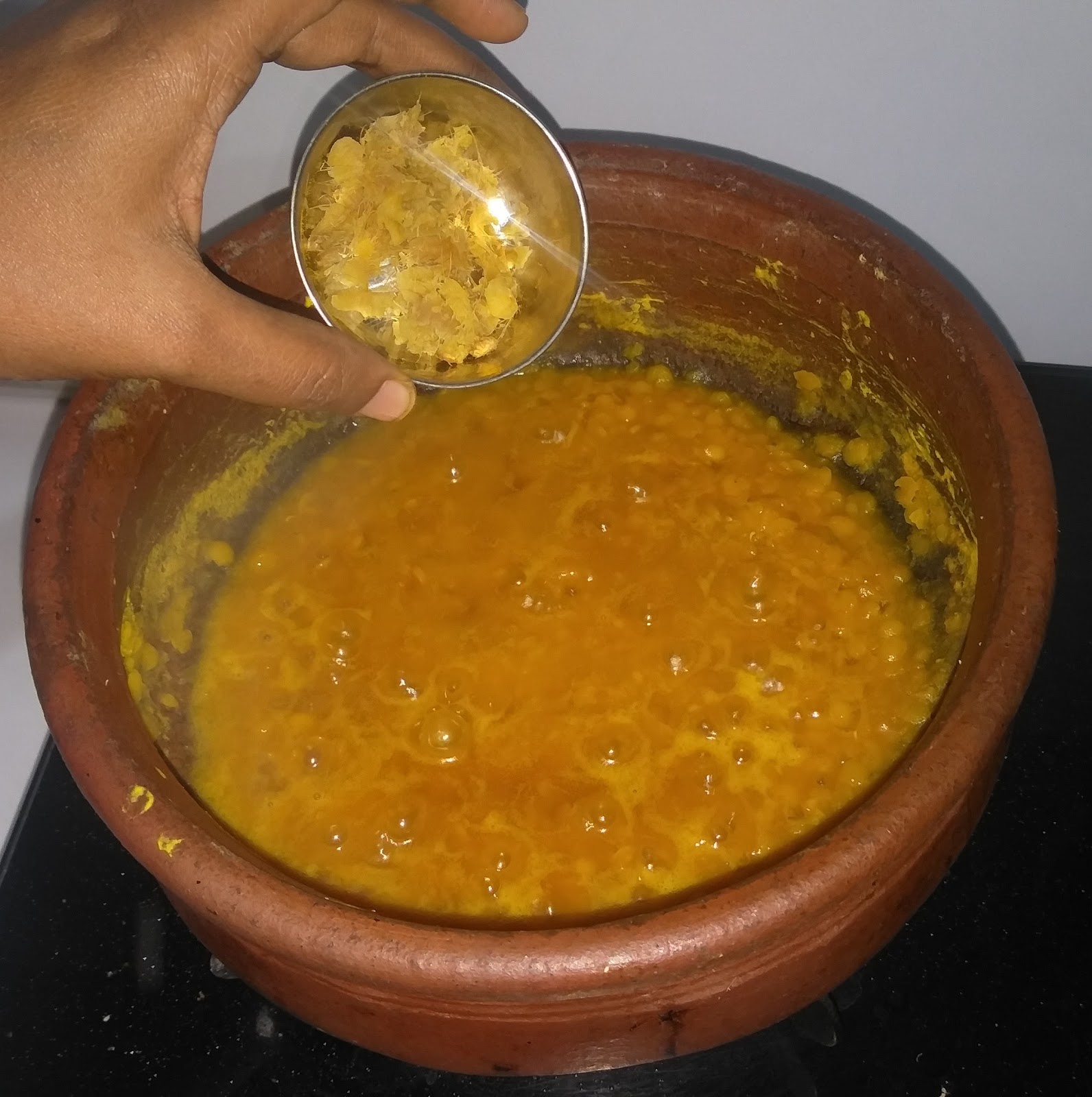
9
Mix hing in water and add it into the dal.
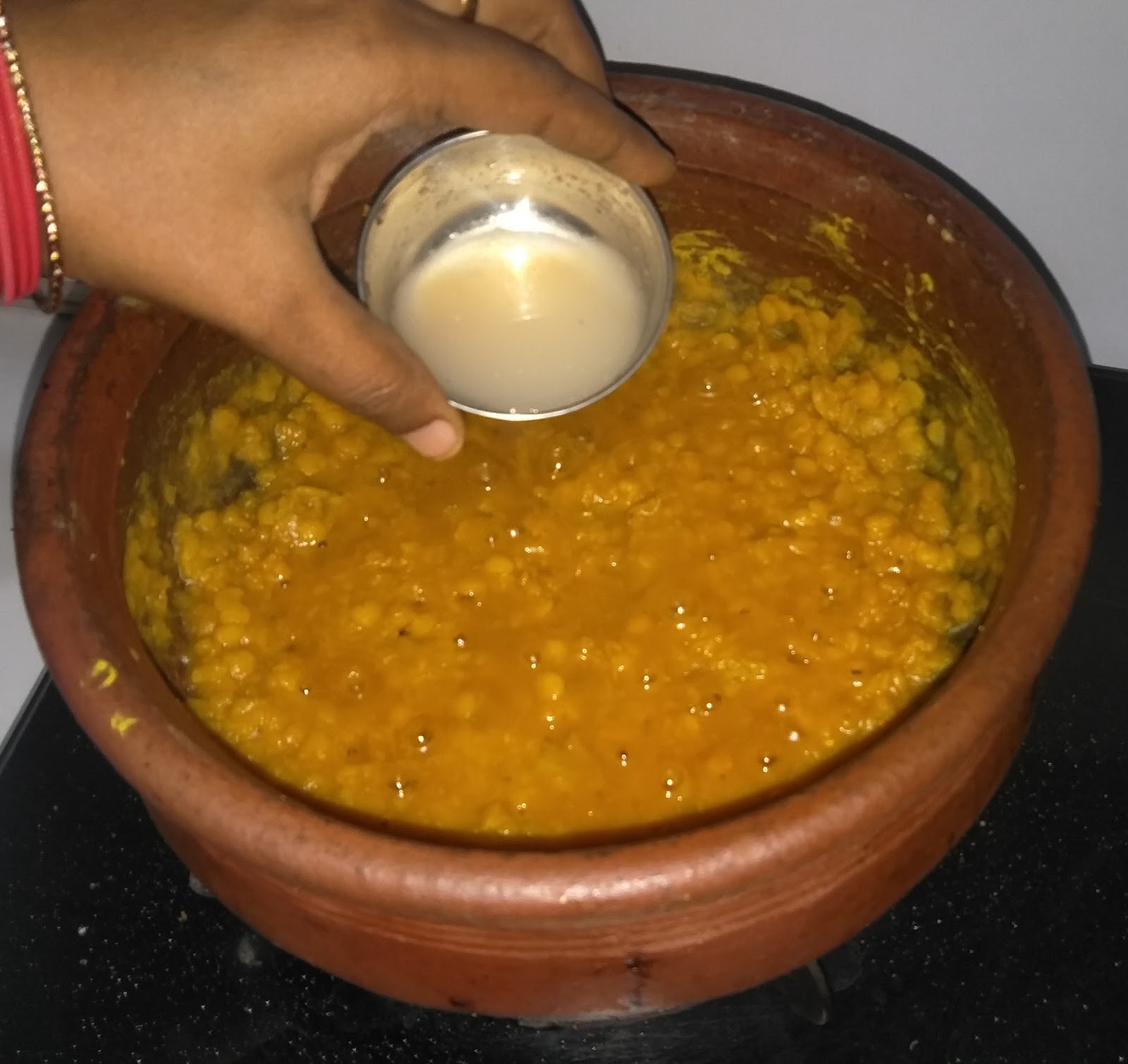
10
Allow the dal to cook completely. Then remove from the stove/heat.
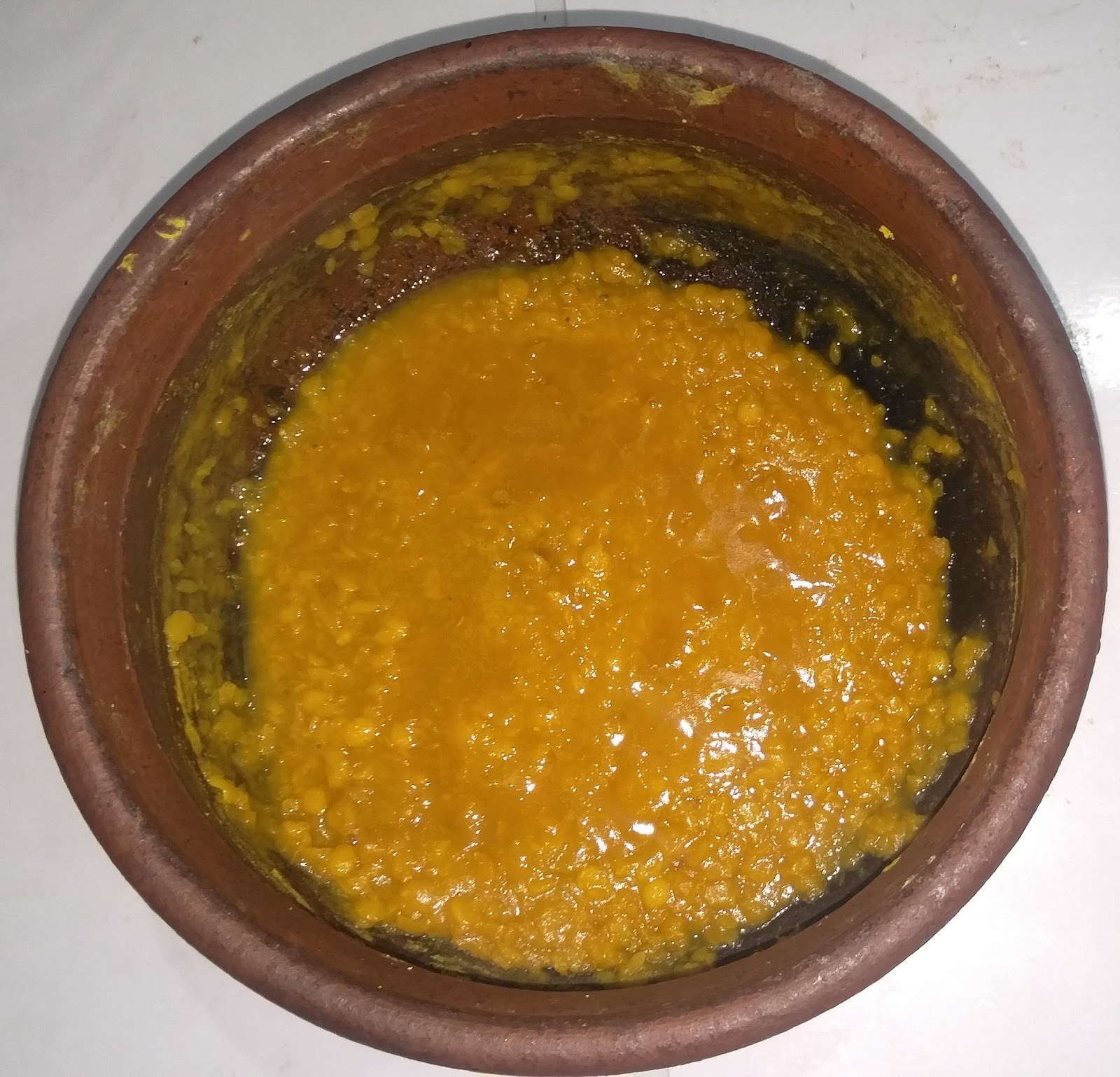
11
Add cumin seeds and mix well.
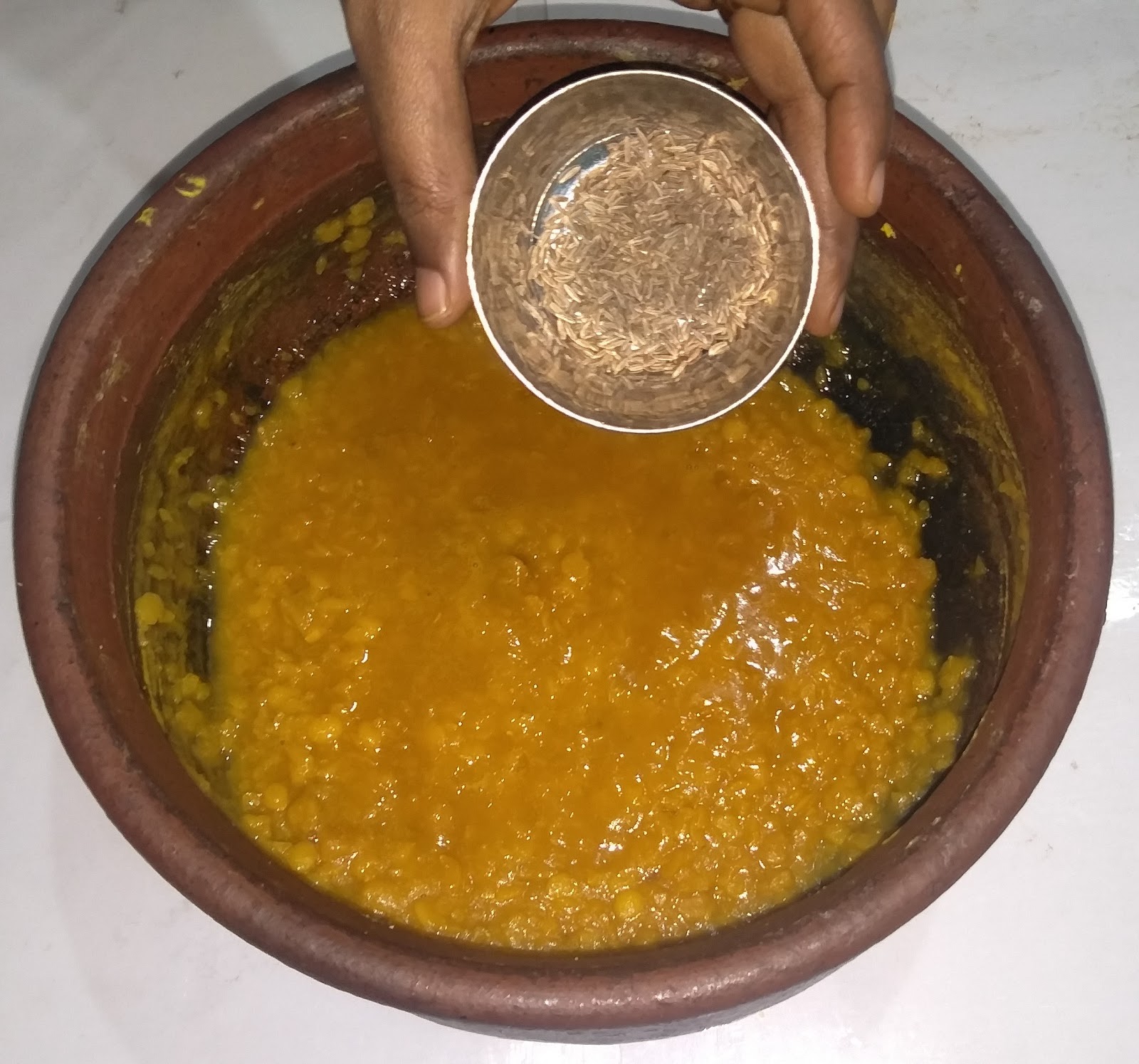
12
Heat the ghee in a pan and add it to the dal

13
Finally drop the Holy basil/Tulsi leaves and Meetha dal is ready.
